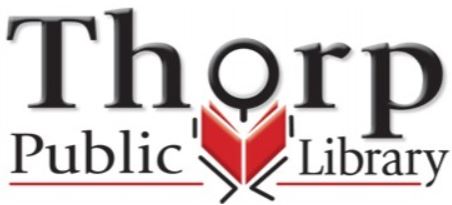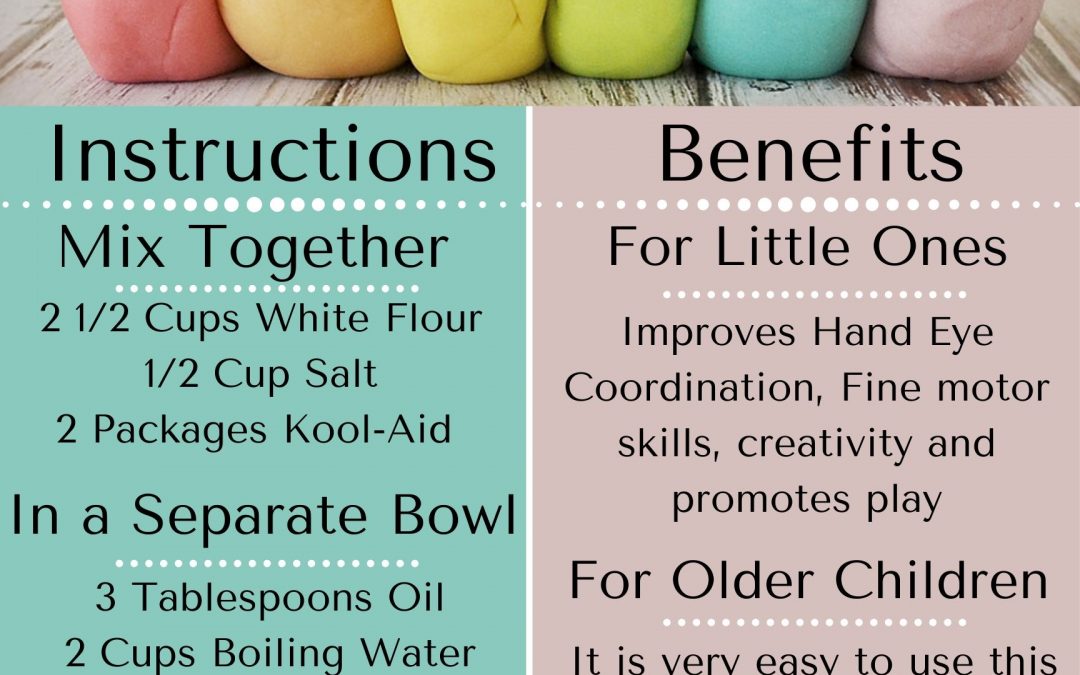Play dough is something that is easy to make at home and is a great item to help with at-home education. Not only is it therapeutic to play with clay (for people of all ages), the process of making it can be a learning opportunity. Remember to play with it in a place that can be easily cleaned up (tile, tables etc. avoid play dough smooshed in carpets.) Below is my (Ms. Anne’s) favorite homemade play dough recipe.
Instructions:
Mix together:
2 1/2 Cups White Flour
1/2 Cup Salt
2 Packages Kool-Aid (Ideally of the same flavor, but two different ones can create fun smell and color combinations)
In a Separate Bowl Mix Together:
3 Tablespoons Oil
2 Cups Boiling Water
Finally add the two mixtures together. Knead until smooth. Store in a sealed container.
Educational Opportunities with play dough:
For Little Ones: General play will help improve hand eye coordination, fine motor skills, creativity and promotes play. You can use it to help promote social skills (via sharing, collaboration and games like pretend tea party/store/construction site), work on life skills (like scooping, pouring, using utensils), help children understand space, size and measurement (can you estimate how much play dough can go into different containers, how many scoops of dough do you need to make a ball the size of your fist) and in general giving kids a place to make a mess without causing you undo stress.
For Older Children:
You can use the making of play dough as a teaching opportunity for older children. Those who are in later Elementary can make this dough with minimal supervision (watch them with the boiling water, you can use slightly cooler if need be). The act of cooking or creating is a great learning opportunity, not only does it teach needed life skills, but it is science in practice.
Play dough takes multiple components to make a homogeneous mixture. A homogeneous mixture is where their components cannot be distinguished from the other and whose components are evenly distributed. The opposite of a homogeneous mixture is a heterogeneous mixture, where the components are still visible, like when you make chocolate chip cookies or put cereal in milk. None of these examples are solutions; however, since a solution is a liquid homogeneous mixture. If you took the kool-aid from the recipe and mixed it with water, the resulting kool-id would be a solution. A solution is made up of the solute (the substance that is dissolved) and the solvent (which is the substance that dissolves the solute). In the case of Kool-aid the solvent is the water and the kool-aid powder is the solute.
Another learning opportunity with play dough is art instruction. If you make small batches of play dough and color them with food coloring (watch out it stains) you can have a child work on color mixing theory. Can they create a color wheel using only red, blue and yellow play dough? Help them learn about secondary and tertiary colors here.
Math is another area where dough can be used to teach. Practice different shapes using the play dough. Create different 3D shapes like a cone, sphere or a hexagonal prism out of dough. Practice recognizing acute and obtuse angles, use it to visual fractions, or create repeating patterns kids will need to finish. Practical demonstrations often make math easy to understand and remember, especially if attentions are starting to wander.
If you don’t have any kool-aid or drink mix try the recipe here, it makes smaller batches and can be made with food coloring. If you have cream of tarter and want a slightly different consistency go here.

